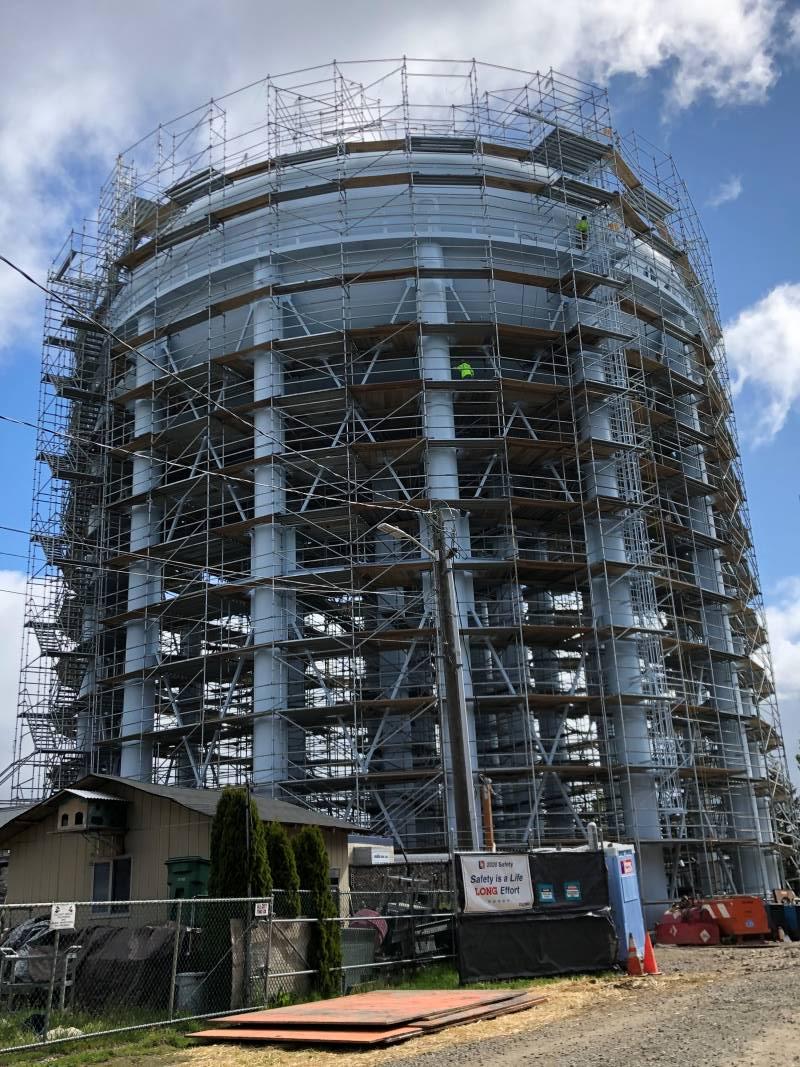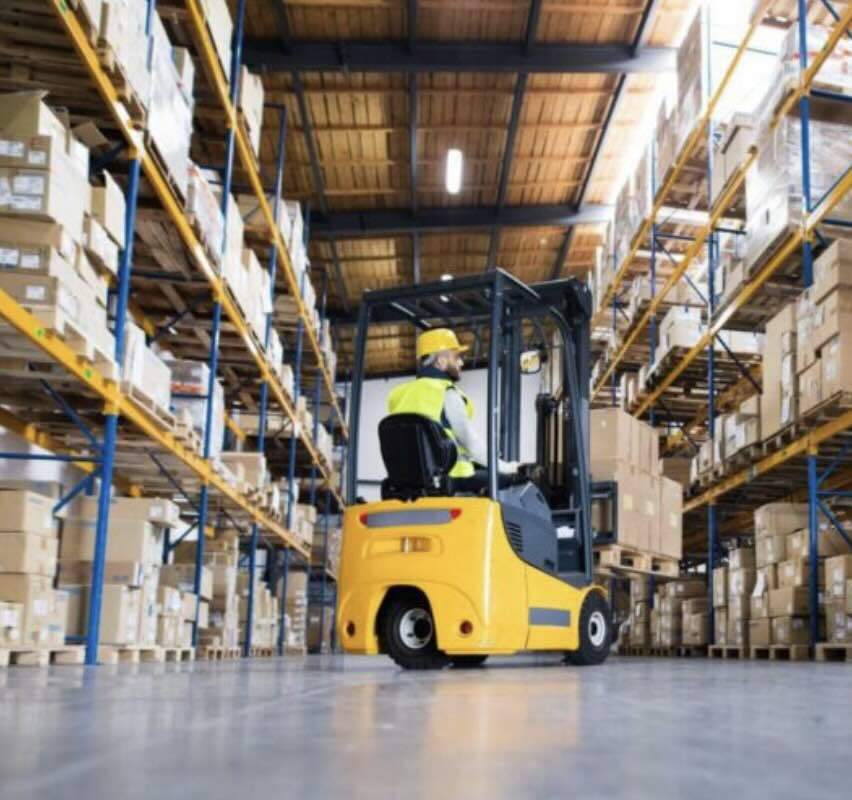
Elevating Quality: Experience as a Requirement in Coating Specifications
Discover why incorporating experience into coating specifications can dramatically enhance project outcomes.
- High Performance Coatings
It is very important to incorporate contractor experience into the coating specification.
Why Experience Matters: Creating Effective Coating Specifications for Challenging Projects
When it comes to protecting vital infrastructure like water tanks, bridges and industrial and architectural structures, the quality of protective coatings can mean the difference between years of reliable service and premature failure. However, a critical element often overlooked in coating specifications is the explicit requirement for contractor experience—particularly for projects involving complex access challenges and demanding environments.
The Hidden Challenges of Specialized Coating Work
Working at Heights: Not Just Another Paint Job
There's a world of difference between applying coatings in a controlled environment and working hundreds of feet above ground on a water tower or suspended from a high-rise building. Contractors without specific experience in these scenarios may underestimate:
- The complex safety protocols required for high-altitude work
- The impact of wind, temperature variations, and exposure on material application
- The additional time needed for proper surface preparation when working from mobile platforms
- The specialized equipment required to achieve consistent results in challenging positions
The Water Tank Dilemma
Water tanks present unique challenges that many coating contractors have never encountered. From interior confined space operations to exterior work on curved surfaces, these projects demand specialized knowledge:
- Understanding the specific regulatory requirements for potable water contact surfaces
- Managing environment conditions like condensation and humidity control inside tanks
- Coordinating work to maintain water service to communities
- Addressing unique access requirements for different tank designs (standpipes, spheroids, ground storage, etc.)
The Reality of Access Equipment Proficiency
Experience with mechanical access equipment is not a given among coating contractors. Consider the specialized skills required for:
Man Lifts:
- Proper positioning to reach all surfaces without comprising coating quality
- Understanding the weight limitations that affect material transport
- Navigating around structural elements without damaging surfaces or equipment
- Planning work efficiently to minimize movement and maximize productivity
Swing Stages:
- Installing rigging safely and effectively
- Managing material supply chains to platforms with limited space
- Dealing with movement and stability issues during application
- Coordinating multiple stages for larger projects
Spider Chairs:
- Proper suspension system setup and anchor point evaluation
- Managing control of rotation and positioning in variable wind conditions
- Maintaining consistent application quality despite the limited workspace
- Specialized training for emergency evacuation and safety procedures
- Coordinating material delivery to technicians in suspended positions
Scaffolding:
- Engineering expertise for proper load calculations and design
- Efficiency in erection and dismantling without damaging substrates
- Creating stable working platforms on uneven or challenging terrain
- Navigating complex structural configurations with appropriate tie-ins
- Understanding how scaffold components might impact freshly coated surfaces
Why Your Specification Should Demand Proven Experience
Preventing Costly Mistakes
Inexperienced contractors often make critical errors that experienced firms have learned to avoid through years of similar projects:
- Improper surface preparation - The most common cause of coating failure is inadequate surface preparation, which is exponentially more difficult when working at heights or in confined spaces
- Environmental miscalculations - Experienced contractors understand how to adjust for changing environmental conditions at different elevations
- Equipment limitations - Unfamiliarity with access equipment leads to inefficiencies, safety hazards, and quality compromises
- Material handling errors - Specialized coatings often require precise mixing and application techniques that must be maintained despite access challenges
Ensuring Safety Compliance
Beyond quality concerns, experience directly correlates to safety performance:
- Contractors with specific experience in similar projects have typically developed comprehensive safety protocols
- Their crews have received specialized training for the unique hazards present
- They possess the proper certifications and understand regulatory requirements
- They've invested in appropriate safety equipment designed for these specific environments
How to Verify Experience in Your Specifications
Requiring Specific Project References
Your coating specification should explicitly require verifiable references that demonstrate:
- Completion of similar projects (comparable size, height, access challenges) and in the same geographic locations, due to specific environmental requirements
- Work performed within the past 3-5 years (to ensure current methods and materials)
- Direct experience with the specific substrate and coating systems specified
- Successful performance of coatings after application (including inspection reports)
Case Study: The Cost of Inexperience
A municipality in the Midwest learned this lesson the hard way when they awarded a water tower recoating project to the lowest bidder without verifying specific experience. The contractor had general industrial coating experience but had never worked on elevated water storage tanks.
The result:
- Application defects requiring complete removal and reapplication
- Project delays extending into winter months
- Additional costs exceeding 60% of the original contract
- Disruption to water service during peak demand periods
Had their specification required demonstrated water tower experience and references, they would have avoided these costly complications.
Building Effective Experience Requirements
When drafting your next coating specification, consider including these concrete requirements:
- Quantitative experience metrics:
- Minimum number of similar projects completed (e.g., "at least 5 water tank exterior coatings in the past 3 years") and in the same or similar geographic region
- Minimum total square footage of comparable work
- Specific access equipment experience requirements
- Verifiable references:
- Contact information for project owners
- Documentation of coating performance over time
- Before and after photography
- Inspection reports from completed projects
- Crew experience requirements:
- Project manager with specified minimum experience on similar projects
- Foreman with documented experience in the specific access methods required
- Certification requirements for specialized equipment operation
- Documentation of safety training specific to the work environment
Conclusion
In the world of protective coatings, experience isn't just a nice-to-have qualification—it's an essential component of project success, especially for challenging applications involving height, confined spaces, and specialized access equipment. By explicitly detailing experience requirements in your specifications, you're not just ensuring quality; you're protecting your investment, ensuring safety compliance, and setting realistic expectations for project execution.
The modest premium you might pay for experienced contractors will be repaid many times over in coating performance, project efficiency, and peace of mind.
Remember: in coating work, the highest cost isn't what you pay for quality—it's what you pay for inexperience.

Warehouse Floor Coatings: Handling Forklift...
Discover how the right floor coatings can...

Exploring High Performance Coatings in Aerospace...
Aerospace engineering demands exceptional...

Surface Prep and Coating Systems for Equalization...
What are Equalization Tanks and why are they used...